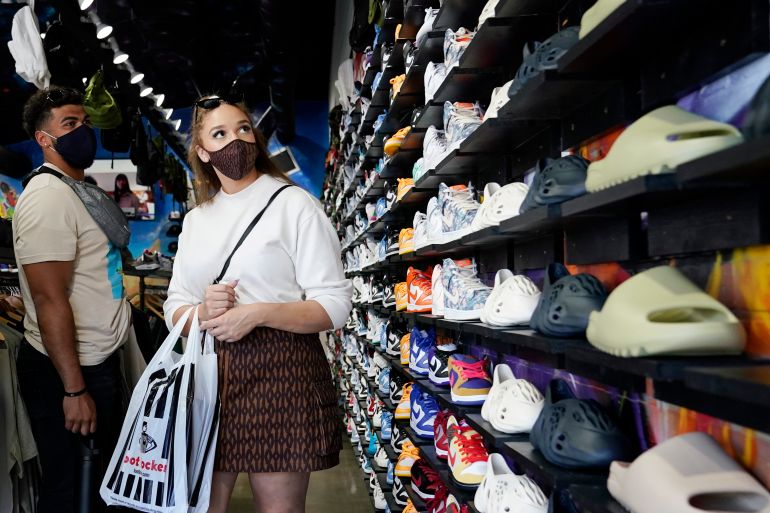Pain in the wallet: US inflation hits another 13-year high
There is little relief in sight for US consumers who are shelling out more for essentials like food and shelter, as inflation continues to be a hallmark of the economic recovery.

There appears to be little relief in sight for consumers in the United States who find their dollars are stretching less and less far these days.
The consumer price index (CPI) rose 0.4 percent in September after increasing 0.3 percent the month before, the US Labor Department said on Wednesday.
Keep reading
list of 4 items‘We need you’: Solomon Islands’ support for US agency’s return revealed
Why are nations racing to buy weapons?
Parallel economy: How Russia is defying the West’s boycott
During the past 12 months, the prices consumers pay for goods and services in the world’s largest economy increased 5.4 percent in September.
That rate matched June and July and brings the annualised rate of inflation back to its highest level since 2008.
Energy prices kept surging in September with petrol prices rising 1.2 percent from the month before, and fuel oil rising 3.9 percent.
Increased prices for food and shelter accounted for more than half of September’s CPI gain – with the food index rising 0.9 percent from the month before, and prices renters pay rising a blistering 0.5 percent.
“We’ve already seen other measures of rents spiking, and this is now beginning to feed into the CPI,” said Capital Economics chief US economist Paul Ashworth in a note to clients. “It matters because those components account for more than one-third of the core index.”
The so-called “core” index, which strips out more volatile food and energy prices, rose 0.2 percent in September, after increasing 0.1 percent in August.
Inflation has become a hallmark of the US economic recovery from last year’s COVID lockdowns, fed by a combination of demand-pumping stimulus, supply chain bottlenecks and shortages for raw materials.
Those forces have increased prices for businesses, many of which then pass them on to consumers.
Labour shortages are also a problem in the US, even though the economy is still roughly five million jobs short of recouping the 22 million jobs lost during last year’s initial round of COVID lockdowns.
Some 4.3 million US workers quit their jobs in August – the highest rate on record – while 10.4 million jobs went begging the same month.
The number of people walking off the job and the sheer number of job vacancies has become an increasing source of concern for the nation’s economic recovery.
Slightly more than half of US small-business owners said they had job openings they could not fill in September, according to a survey by the National Federation of Independent Business.
To lure workers off the sidelines, firms have been offering incentives like signing bonuses and wage bumps. Those higher wages are often translating into higher prices charged to consumers, which means fatter paychecks are not necessarily translating into flusher household finances.
Fears of contracting COVID, as well as a lack of childcare options and savings accounts primed with stimulus aid, have been cited as factors that are keeping jobless workers from finding new positions.
The impact of the Delta variant was on display in Wednesday’s CPI numbers well. Prices paid in customer-facing sectors like travel declined last month. But “with the Delta-related wave of infections now fading, demand for high contact services should rebound,” said Ashworth.